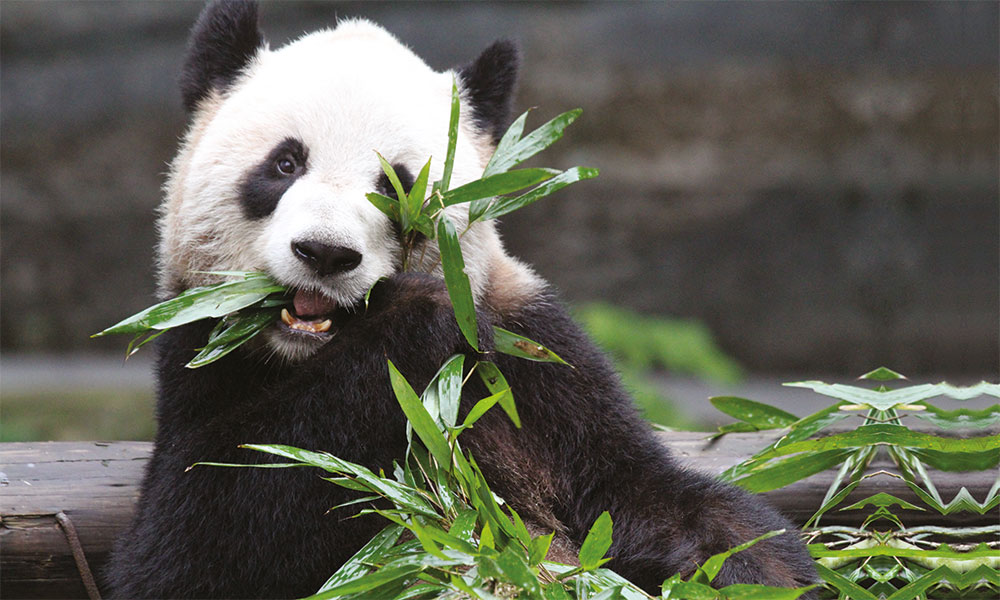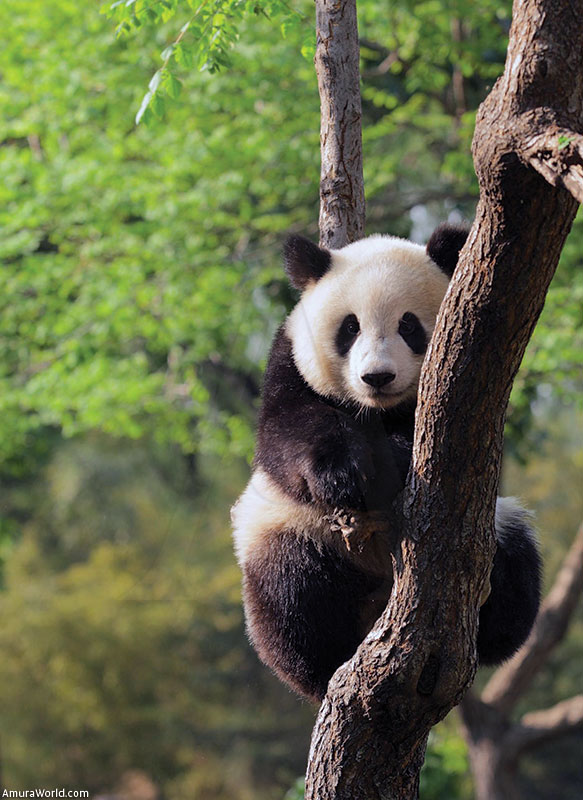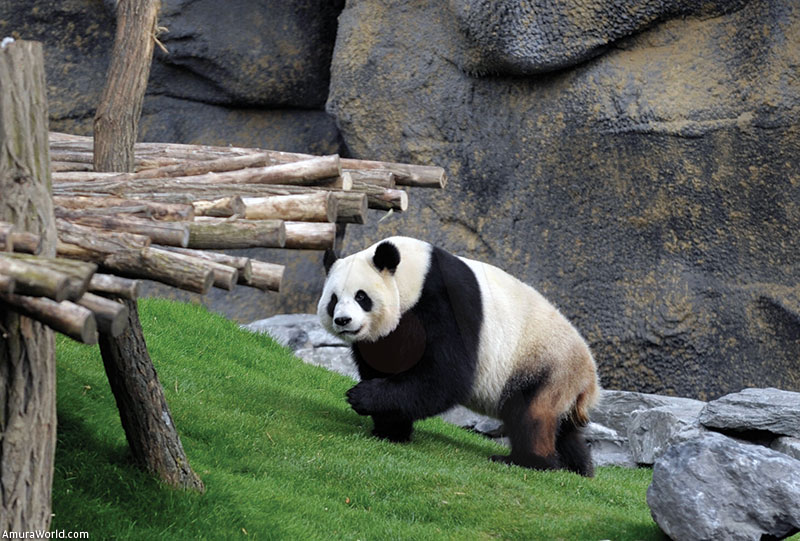China National Treasure
The giant panda, known in China as Xiongmao, meaning “the great bear-cat”, is classified as the rarest mammal in the world; not just owing to the combination of its black and white fluffy fur that has given it its fame as a good natured being, but for its difficulty to reproduce, vulnerability to illnesses and peculiar feeding habits as, even though they have a carnivore digestive system, they depend on bamboo to survive.
A new species
Outside China, the very existence of the panda bear had been unknown until 1869, year in which Jean Pierre Armand David, French priest and missionary, gave the first data about its existence. By 1870, it receives its definite name: Ailuropoda melanoleuca, the same as the “giant panda bear” title. This means that, for the Western world, it has less than 150 years of existence. Nevertheless, there exist archeological vestiges of pandas, such as the finding of a panda skull in a Han dynasty royal tomb, dated on the second century b. C, thus witnessing to the relevance of these animals. Also, in a Chinese 2500 year old cartography handbook there appear the ideograms depictong the word “big, bear, cat”.
Incomparable animal
Even though the panda is getting farther from the imminent danger of extinction, because of the care and commitment that man has put into its care, still there is a lot to do in order to reestablish its population; currently around 1610 individuals in the wild.This is one species requiring greater care and attention for its reproduction; moreover, what is known about them is based on the observation of specimens in captivity –approximately 200 panda bears in several zoos around the world—because the ones living freely are a rare sight and rarely studied.
Being aware of the panda’s significance and its environment, the Chinese government scheduled a program for its protection a decade ago, setting a panda bear forest reserve of about 16,500 Km2, which is close to a 45% of this singular species’ habitat, where 980 pandas live, that is, 61% out of the total population. However, environmental groups such as the World Wildlife Fund (WWF) point out that a bit less than 800 pandas (49% of the population) continue to be threatened by pouching and constant destruction of their environment.
Although classified as a carnivore, the panda’s diet is based on a 97% of vegetables: gentians, lilies, saffron and, mainly, bamboo stalks from one of the 300 species that grow in China, which takes up to 20 years to flourish. The rest of its diet is fruits, little mammals (rodents), fishes and insects. This specimen received its Chinese name “bear-cat” on account of its peculiar catlike pupils, and is famous for being an insatiable eater, out of the 10 to 12 hours it spends eating, in average, it consumes between 12 to 38 kg of bamboo.
In the wild, the giant panda is between 1.20 and 1.50m tall, weighs up to 130 kg, lives in the Chinese mountainous region from Gansu, Shaanxi, and the provinces of Sichuan, up to the east of the Tibetan plain, at a height between 2300 and 3300 meters, where the weather and humidity allows the growth of its staple food. In the summertime, it seeks a fresher weather and reaches regions up to 4000 m high, where the fresher food and young shoots on the mountainsides are found.
These are lonely animals, they give the impression of being sedentary; able climbers and outstanding swimmers, though; in addition, they have highly developed senses of smell and hearing; even though they do not have the needed energy to confront other pandas, they are extremely territorial; they follow their olfactory sense to recognize their home ground, which may comprise an area between 4 to 6 Km2; besides, in the springtime, season in which the females are in estrus, they use their sense of smell in order to find a couple to mate.
WWF in action
WWF, the organization that carries as its symbol the image of the panda bear, has actively supported the conservation of this species ever since 1980, when it promoted the works of scientist Dr. George Shaller and his Chinese colleagues, works that were carried out in the Wolong natural reserve; that was the way in which WWF distinguished itself as the first international organization invited by China to work in the field. Since that time to date, this institution has aided the Chinese government to accomplish its National Conservation Program for the giant panda and its habitat; which has been greatly successful, as the reserves assigned for this species cover more than 16000 Km2 of forest inside and around the panda’s habitat. In the last census there are accounted for more than 1600 specimens roaming freely.
Xiongmao Lake
Located in the Jiuzhaigou Valley or Valley of Nine Villages, a natural reserve inscribed by the UNESCO as a World Heritage Site in 1992, north of the Sichuan Province, at a height of 2587 meters; the Xiongmao Lake, distinguishes itself for its motley waters and the beauty of its alluring 80 meter tall and 50 meter wide astounding waterfall. In the wintertime, these waters freeze forming a wall of ice and a crystallized landscape.
Many travelers and visitors believe this lake is named after the Chinese title of the panda bear (Xiongmao), because it is common to see these nice animals roam around the place; where they arrive in order to freshen up and drink the crystal clear waters. However, in fact, --according to the aborigines—its name was given because of a white rocky formation with black spots similar to the panda bear skin; there exists even a legend, lost its origin in time, that tells it is a panda bear tutelary deity of these lands and that, the day the rock disappears, the panda bears also will disappear from China.
Text: Rebeca Castillo ± Photo: Bussiness Wire / World for travel / ZiCAsso / CTVNA / JOD / SAM AUL /BIRIZ/ TSE JAN








